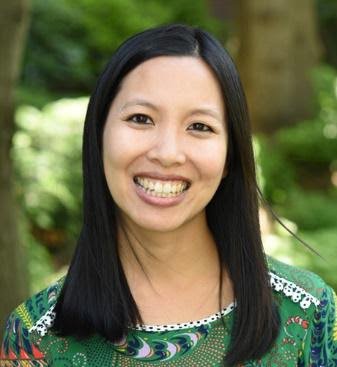How to Rethink Your Business Objectives and Execution Plan with COVID-19

Full of actionable advice on shifting your business plans as funding becomes harder to raise, this blog post comes to us from Christie Lee at Nourishing Food Marketing. As a Harvard MBA, former food founder, and classically trained brand marketer, she breaks down what you should be thinking about to survive during these challenging times.
These are challenging times: we’ve seen funded start-ups of all shapes and sizes change how they do business to prepare for an environment where raising money is more difficult (Sequoia Capital wrote publicly about how COVID-19 will change your business). Companies have been laying off employees, diversifying sales channels, and accelerating innovation. We’ve heard reports of funding slowing down for food and beverage brands and share of stomach shifting back to legacy brands. But don’t worry, today’s environment won’t last forever and consumers will prioritize being healthy again. Your job is to survive until that time, so you can then thrive.
As a CPG brand, how can you adjust to these challenging times? We know that emerging CPG brands that survive a recession will thrive afterwards. Today, we’ll talk about how the change in the fundraising world affects you and how you can set your brand up for success.
What Brands Need to Know about Fundraising In 2020
If you haven’t raised institutional money yet, but were planning to, the rules have changed. Institutional investors are still looking to invest and we see news of CPG brands raising money. But, money is flowing less freely now with investors concerned about economic uncertainty, consumer spending, and how they will raise money. They’re also reserving some cash to support companies that they’ve already invested in. For you, this means that you will have to show more traction to attract investment and you won’t get as favorable terms. The latter is a bummer, but it’s the former that you have to worry about today. How can you bootstrap to hit impressive milestones of product velocities and distribution growth?
Note: you can read more on my blog about the tradeoffs between institutional investors and Friends & Family funding, how your funding sources changes how you run your business, and why raising VC funding isn’t for everyone.
If you have raised institutional money, you’re in a similar boat. You’ll need to stretch your round out longer than you originally planned because the bar has been raised for your next milestones. You’re lucky and have existing investors that can help bolster you; you must keep in close communication with them. They’re a valuable resource as you adjust your business strategy and objectives during COVID-19.

Rethinking the Rest of 2020 As A CPG Brand
Adjust your business strategy:
Many of you are already doing this because some sales channels are no longer viable (food service), while it’s taking longer to see success in other channels (brick and mortar retail). As you’re making these changes, think about where you should focus your time and money:
- Sales Strategy: Shifting your channel strategy is a huge organizational commitment and won’t pay off in a few months, so ask yourself if this channel strategy shift will make sense next year, too.
- Marketing Strategy: What are you talking about with your consumers? Don’t talk about traveling, togetherness, and sharing. Do have empathy, provide online experiences, and give tips on how we can be our best selves during these trying times.
- New Product Launches: Ensure that your innovation is relevant and with the right timing. Consumers aren’t trying new products as much today and it’ll be more difficult than usual to get on-shelf.
Reassess your execution plan:
With an adjusted business strategy, you will need to change how you are running your business day-to-day.
- Change your workstreams: Based on your adjusted business strategy and timeline, create new workstreams, discontinue non-essential workstreams, and reprioritize all workstreams.
- Inspire your employees: Create ways for your employees to connect even as they’re working remotely. Make a promise to your employees, and then follow through, to take a look at bonus plans that not only reflect the pandemic, but also your new business reality.
- Set your employees up for success: Clearly communicate to your employees their individual objectives and how they’re contributing to the overall business objectives. Establish the right needle-moving activities. Assess whether you have the right knowledge on your team to meet your new business objectives or if you need to make the hard decision to lay someone off or hire a consultant to get you up-to-speed quickly.

Show me the money:
It’ll take you more time to show your brand has traction to raise institutional investment. Until then, you need to survive as a business.
- Tighten the belt: Every dollar must work hard for you. Look at every expense and ask yourself, is this critical for achieving my business objectives?
- Understand your cash flow: Will you be able to pay your bills? Cash is king at a start-up and even if your revenue is growing, you may not have the cash to cover payroll. Update your cash flow forecast assumptions or take the time to build one. Depending on your accounting software (Quickbooks has an internal tool), you may need another tool to create your cash flow forecast - one option is free Google Spreadsheet templates.
- Say yes with caution: You can no longer price your products expecting institutional-funded growth to increase your scale and lower your expense ratio. Said another way, the money someone pays you for your product needs to cover both your cost of goods sold (COGS) and all of your overhead costs (SG&A). That means taking a hard look at your product’s revenue in each channel and whether a promotion delivers more profit than it costs (positive ROI).
As we all adjust to a new world, it’s important to be thoughtful about how we change. Be clear about what you’re changing and why, think about the long-term implications, and make the hard decisions now so you can stay in business and flourish once the economy begins to open up again.
About Christie

Christie is the founder of Nourishing Food Marketing, a brand marketing consultancy for food and beverage brands. She blends the thinking of Big Food, from working at Clorox on Americana brands like Hidden Valley Ranch, with the resource-constrained realities of small brands, as a former food founder herself (Tiny Hero). Nourishing Food Marketing is an action-oriented consultancy that develops strategies and executes on them.
Special Parsnip Offer
Tell Christie that you’re from Parsnip and get $100 off your Marketing Audit and Plan Development!


